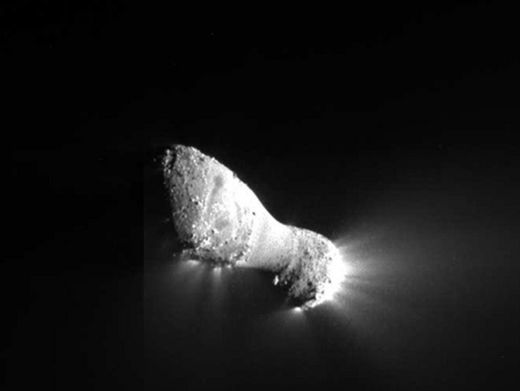
Deep Impact put on a spectacular show for scientists and space-geeks alike when it rendezvoused with Comet Tempel 1 in 2005, smashing a projectile into the dirty snowball in order to see what lies just beneath the surface. The mission, now renamed EPOXI, has taken the spacecraft past Earth several times on its way to a new cometary target, Hartley 2.
The craft's closest approach to the comet will be on November 4th, when it will pass just 435 miles from the comet nucleus just as it is starting to warm up and become active in its approach of the Sun. However, science observations are already underway, as data taken in early September indicates that Hartley 2 increased its cyanide output five-fold over a period of just eight days.
Cyanide is a deadly gas to we humans, however, it is a common carbon-based molecule found on comets. In fact, comets are thought to have brought many life-building organic molecules to the newly formed Earth 4.5 billion years ago. (You can represent that in a model comet by adding soda or corn syrup!)
Usually, however, an increase in such outgassing is accompanied by dust emissions as well, and this was not seen. So, the comet is behaving strangely, and astronomers are excited to get an even closer look of this very active comet in the coming days.
In addition, Earth-bound skywatchers may be treated to an extra surprise from Hartley 2. Fireballs seen in Canada and the southeastern United States just five hours apart seemed to have the same trajectory as each other and the comet. Though this may be coincidence, there is some small chance that they are all related and that a new meteor shower will be discovered from the debris of Comet Hartley 2.
Even if you don't see any fireballs, be sure to check out what promises to be stunning images from the close encounter on November 4th!



Reader Comments